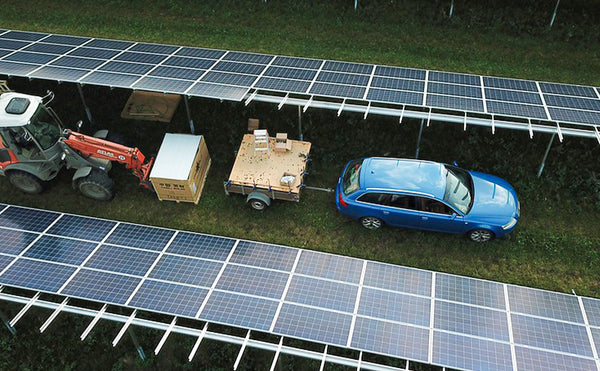
The Difference between BIPV and BAPV
With the development of photovoltaic technology, as two main PV application forms, BAPV and BIPV have gradually gained a lot of popularity in the market. BIPV refers to Building Integrated Photovoltaic, which mainly focus on the integration of new building and material with the PV industry. As a subdivision track for the future development of photovoltaic industry, BIPV is designed for the construction and installation of photovoltaic power generation system with new buildings at the same time and combine with buildings, so as to organically combine photovoltaic panels with building roofs and walls, and has a wide range of application scenarios.

BAPV means Building Attached Photovoltaic that is the power station is installed on the roof and outside the wall of the building that has been put into use, which has no impact on the original structure of the building. At present, as the replacement of BIPV, BAPV is more popular among the market. The reason is that the initial installation cost of BAPV is low and there is no need to replace the roof. Therefore, in the short term, BAPV does have enough advantages. But according to the latest forecast, this situation is expected to be changed in 2025, that is, BAPV and BIPV will achieve return parity, and it is expected that the installed capacity of BIPV will grow faster, with a compound annual growth rate of 117% in 2021 to 2025 and 31% in 2026 to 2030.

It is benefited from the deceasing initial installation cost and unique technical advantages and policy incentives. It is expected that the reduction of the cost difference between BIPV and BAPV will mainly come from economies of scale and technological progress. As a sustainable building material, it is generally believed that BIPV will enjoy additional subsidies, while BAPV may face the situation of subsidy decline or even no subsidy, which will lead to a lower market. In addition to IRR return parity, unquantifiable benefits such as security and elimination of hot spot risks will further increase the value of BIPV investment. As a result, the industry expects annual installations of BIPVs to outpace the growth rate of BAPVs, with a CAGR of 71% in 2021 to 2030 compared to 13% for BAPVs.
That is to say, they are expected to achieve dynamic balance and synchronous development. As an excellent manufacturer of photovoltaic industry, Xinpuguang has different types of products and scheme designs for you to choose from. If you need to buy, you can call for advice, and SOLARPARTS will answer your details!
Facebook: Xinpuguang Solar Panel
Instagram: xinpuguang_solar
Pinterest: XinpuguangSolarPanels
Homepage: https://xinpuguangsolar.com
Email address: Philip@isolarparts.com
- Выбор элемента приводит к полному обновлению страницы.
